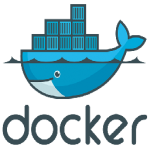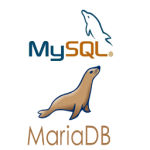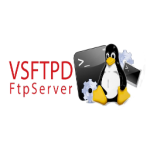Archives
now browsing by author
How to Set/Fix the TERM Environment Variable in Docker

In this mini post, I’ll show you how to manually set the TERM environment variable when using console programs with text-based UIs (top, clear, less, nano) inside docker containers.This will remove/fix the warning messages from those programs and they’ll work properly. Here’s the problems I faced: I create a containerRead More

Howto import a database into a Docker container

Congrats! you’re migrating your works/development environments into Docker containers. This is a new start for you as a system/devops engineer, as docker will solve many issues you faced before due to packages conflicts and package’s releases conflicts. Here’s the issue I face and made my write the mini post, AfterRead More

Backup and Restore MySQL/MariaDB Databases

In this article we will show you the first and most important task every database administrator / sysadmins must master “Backup and Restore your databases”. We divided this article into two parts. In part 1, We will show you how to perform backup for both MySQL and MariaDB databases for aRead More

Howto find and detect the encoding of text files in Linux systems

How many times did you want to find and detect the encoding of a text files in Linux systems? or How many times did you try to watch a movie and it’s subtitles .srt showed in unreadable shapes “characters” ? All this because you are using a wrong encoding formatRead More

How To Install FFmpeg on CentOS/RHEL 7/6/5 Linux Systems

In this post, we will show you how to install FFmpeg on Linux systems (RPM Family “Redhat /CentOS /Scientific Linux 7/6/5 and Fedora”). FFmpeg is a popular open source and cross-platform solution for streaming audio and video as well as recording and conversion. It’s widely used in all kinds ofRead More

Enabling Gzip Compression in Apache Web Server on Linux Systems

In this article, we will show you the steps and benefits of enabling Gzip compression in Apache web server on Linux systems (RPM Family “Redhat/CentOS/Scientific Linux ”and Debian Family “Debian/Ubuntu”). Performance of your website can be improved by enabling response compression using GZIP. Compression reduces the size of a responseRead More

Enabling Gzip Compression in Nginx Web Server on Linux Systems

In this article, we will show you the steps and benefits of enabling Gzip compression in Nginx web server on Linux systems (RPM Family “Redhat/CentOS/Scientific Linux ”and Debian Family “Debian/Ubuntu”). Performance of your website can be improved by enabling response compression using GZIP. Compression reduces the size of a responseRead More

Howto remove / solve “ruby-build: definition not found or ruby version not found ” on Linux systems

In this mini post I’ll show you how to update your installed ruby version with a higher one not found by ruby-build on Linux systems (Both RPM Family “Redhat / CentOS / Scientific Linux and Debian Family “Debian / Ubuntu”). This mini post will solve this error message “ruby-build: definitionRead More

How to Install Redis server 2.8 and higher “latest Redis” on Debian 8/7 “Jessie/Wheezy” Linux systems

In this mini post I’ll show you how to install and configure the latest redis-server on Debian 8/7 Linux systems. Sometimes you need to use a certain version of redis or any of it’s later versions for your apps to work correctly. Here’s I need to install redis-server > 2.8Read More

How To Setup and Configure VsFTPd Server on Debian 8/7/6 Linux Systems

VsFTPd stands for Very Secure FTP Daemon. VSFTPD is the most popular ftp server. Also probably the most secure and fastest FTP server for UNIX-like systems. If you are searching an FTP server which can provide you Security, Performance and Stability then your searching is finished here, vsFTPd can beRead More




